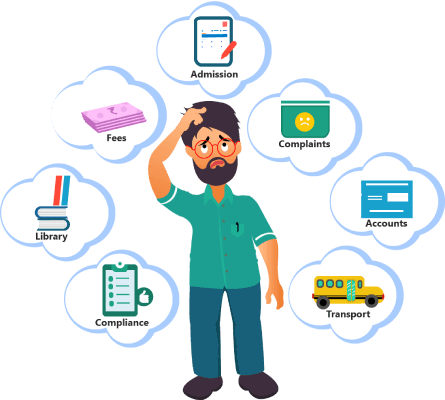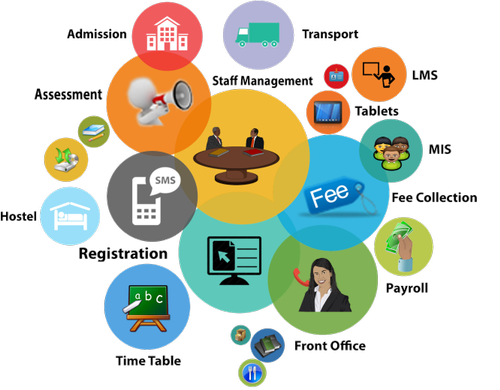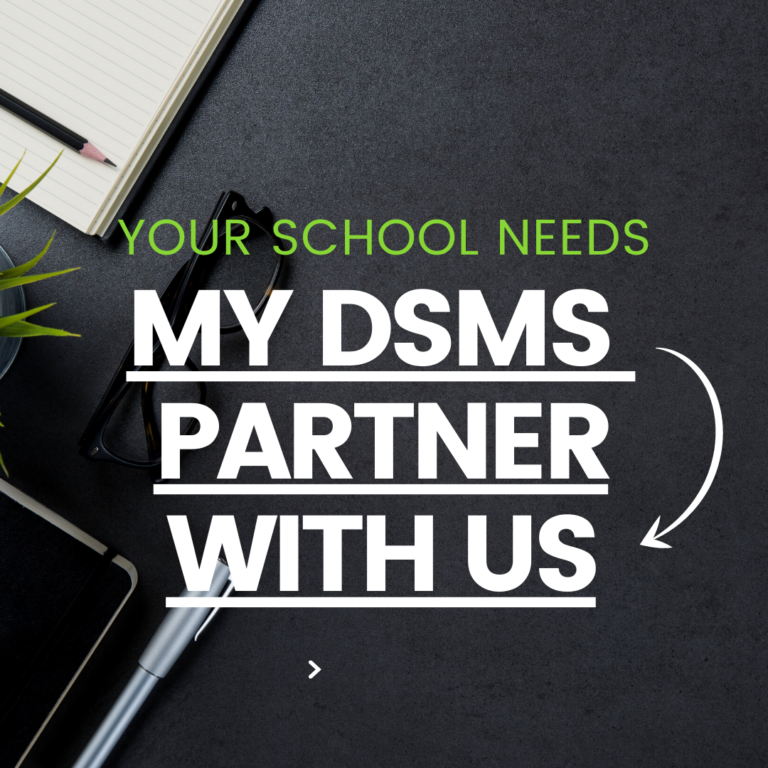There are many types of software, and it is difficult to know what will be useful for your school when adding technology. It can be difficult to meet some of your school’s challenges without this understanding.
School officials can get lost in the clutter of “EdTech” terminology that swirls around, but this is one simple – but important –a factor that keeps them unaware of what’s available. For many people, the term “EdTech” is just such a confusing one; it’s shorthand for “Educational Technology.” It can be difficult to sort through the many terms. Others represent legitimate names of common and important software, while others are mere jargon words referring to abstract ideas.

In order to get you started, let’s look at a relatively straightforward EdTech term that is critical to K-12 business processes but that can sometimes seem complicated to EdTech newcomers – ERP.
What is ERP?
ERP stands for Enterprise Resource Planning.
ERP software is commonly referred to as an Enterprise Resource Planner (ERP) and is designed to automate business processes for companies, organizations, or, in your case, schools. A typical ERP system functions by integrating multiple “applications,” or tools, to integrate data from various departments into one database and to seamlessly connect departments together. A comprehensive ERP software solution puts all the information you require at your fingertips, whatever the task – whether it’s compiling a year-end report or checking the status of your accounts receivable.
What is My Learn Digital School Management Software (My DSMS)- ERP?
A school ERP aids in the management of all day-to-day school activities such as administrative tasks, teaching, curriculum management, student attendance, student information, fee record management, homework management, and so on.
My DSMS provides all stakeholders with a consolidated dashboard view that shows all imperative information. Not only that, but with real-time data such as student progress, attendance records, and future events, parents and teachers can keep informed, improving communication between the institution and parents.

Schools can ameliorate their daily school administration procedures by implementing an integrated school management ERP system. For example, in the case of admissions, schools can carry out all processes paperlessly, improving efficiency and saving time and money. Student and staff data may be accessed simply and at any time with better record management, minimizing errors. Learning content management becomes simple and efficient, allowing teachers to spend less time planning and more time executing. Assessments and assignments become easier to assign, and teachers save time by not having to manually follow up. School administration ERP solutions have emerged as a game-changer thus empowering the school owners and teachers.
Why your school needs MY DSMS?
Planning and management are essential for the growth of any institution. Likewise, academic institutions are subject to the same rules. The old school management method involved going through piles of paperwork religiously. However, school management software makes systemic school management possible. An ERP system automates and manages the day-to-day activities of schools, and is known as School Enterprise Resource Planning (ERP).
One school can manage online lessons and exams as well as automate admissions using a single piece of ERP software. Enrolment doesn’t have to be a long process for students. Additionally, as might be expected, school ERP software systems offer a variety of advantages.

Let’s find out what this software system promises to be the top advantage for your school.
My DSMS Benefits:
1) Reduces Workload
As a matter of fact, school ERP software is an excellent tool to reduce the admin staff’s workload. The power of automation allows a single software to serve as the basis for the entire team.
For instance, let’s look at the admissions process. The ERP portal is required for enrollment information to be entered by all enrollees. Uploading the necessary documents is also easy. Additionally, online payment methods are supported, so payment isn’t a hassle.
Meanwhile, administrators don’t have to worry about upcoming enrollment seasons. Just the submitted documents must be reviewed. They are not required to file themselves. It’s a task that is lighter and easier than it has ever been.
You can expect a similar experience with other administrative processes as well.
2) Increase productivity
In line with the previously stated benefit, less workload influences productivity levels. Because they are not bombarded with repetitive tasks, the administrative staff can devote their time and energy to more pressing issues that are not covered by the software.
The admissions staff can concentrate on generating admission leads and responding to previous inquiries. In addition, the team will have more time to work on other requests and provide a better experience for students and their parents.
Human resources staff can also use school ERP software to automate some of their processes in other areas. Payroll is a critical feature for the majority of these software systems. It is linked to another factor: attendance.
In this case, the Human resource department does not need to go over the employees’ time cards manually in order to calculate their salaries. Let’s face it. The entire procedure is exhausting and draining. It is also prone to errors.
Fortunately, the ERP software can resolve all of these issues. Furthermore, it is a more cost-effective option than investing in payroll management software that produces the same results.
3) Easy data integration
The majority of school ERP software systems are hosted in the cloud. As a cloud-based system, it stores all of its bulk data in a single cloud infrastructure.
All stakeholders benefit from this system. The school administration, for example, can save and retrieve data from other school departments without having to interact with them in person. A straightforward authentication request will suffice.
Teachers on another hand, find it easier to disseminate learning material and modules of various file types. They are not required to use the standard slide visual aids and written outlines. It is now easier to upload and store video and audio files for live classes.
In the same way, it is advantageous to the students. They do not need to log into multiple digital classroom platforms to access the materials they require for class.
Finally, because this software covers the majority of school administrative processes, it does not require repetitive data input. Assume that the student’s record is required for fee collection. The student is not required to repeat their basic information. The processing
staff can easily retrieve the record and filter out what they require.
4) Use of smart technology
People are discovering more inventive uses for technology as the years’ pass. One example is school ERP software. Who would have guessed that in today’s education management, automating school processes is the way to go?
Finally, one of the most obvious advantages of system automation is the reduction of environmental waste.
Forms are required in most administrative processes to complete specific tasks. These processes produce mostly paper files as well. Ledgers and folders are commonly used to track and store these materials.
The use of school ERP software reduces the need for so many paper files and materials. The software is used to submit requests. This system makes it simple to conduct online exams, assignments, and other paperless tasks.
The institution becomes more environmentally friendly by going paperless. In addition, all documents are easier to manage, track, and store. To store three years’ worth of records, large file cabinets are no longer required.
Conclusion
There is no doubt that system automation has several advantages. Sometimes the advantages appear too hazy or far-fetched to be relatable. However, the advantages of school ERP software are obvious and straightforward. There are several, but the list above highlights the most important ones. You don’t even have to work hard to reap these benefits.
What makes these benefits even better is that they are all-encompassing, and appealing to all stakeholder groups.


